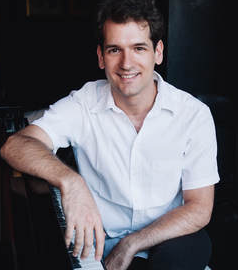The Art of Listening- Chopin: Scherzo No. 2 in B-flat minor, Op. 31
Javor Bračić, piano
National Opera Center, New York, NY
October 8, 2017
Mr. Bračić, has created a series and a format that aim to “change the way you think about classical music.” Based on my experience this past Sunday, I’d say he’s well on his way as a persuasive music educator, and he is a very capable pianist. The series has been reviewed favorably elsewhere in this journal.
When I saw the repertoire choice, Chopin’s Scherzo No. 2 in B-flat minor, Op. 31, my immediate reaction was “Oh no, not that warhorse,” but my worries were unfounded. He is one of only two pianists I’ve ever heard who played the opening theme in the proper “questioning” way that Chopin was always asking for—and with no rhythmic distortion. The other pianist was the estimable Krystian Zimerman. Because of his fleet fingerwork, many passages also seemed more “playful” (scherzando) than usual. As Schumann said: “It remains an utterly compelling piece; one could compare it to a poem by Lord Byron: so tender, coquettish, and affectionate—yet so full of scorn.”
He began by dividing the work into its major sections and giving a sort of gentle exegesis of Chopin’s process and possible meanings, but his engaging, soft-spoken manner, and his ability to involve the audience created an ease that drew everyone right in, regardless of their prior music education or experience. Everyone’s input was valued, there was never any condescension or feeling of “this way is right and that way is wrong.”
After a full exploration, he then concluded with a complete performance, very well-rendered, especially after having talked for nearly an hour. Not everyone has this double ability to speak well about music while remaining a super executant, but Mr. Bračić, definitely has it. I see that a future event will focus on Samuel Barber’s Sonata for cello and piano. This is to be commended, as the more “modern” repertoire needs even more advocacy.
I should mention the format was gracious too (despite the limiting piano quality of the National Opera Center, which Mr. Bračić, took in stride with no apparent difficulty): the audience mingles and chats, with wine and cheese served both before and after.

